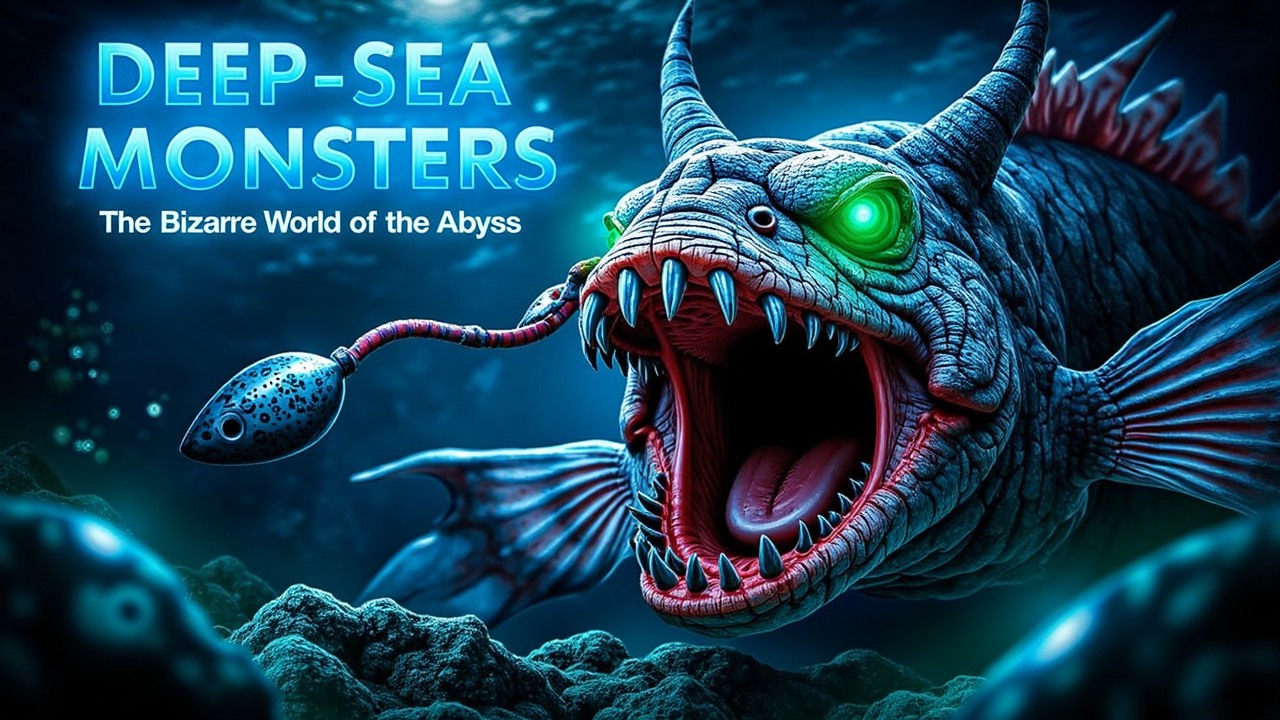The deep sea is one of the most mysterious and least explored parts of our planet. Hidden beneath miles of water, it is a world of eternal darkness, crushing pressure, and bizarre creatures that seem to have emerged from a nightmare. But what exactly makes deep-sea creatures so creepy? Let’s dive into the eerie world of the abyss and uncover the reasons behind their unsettling appearances.
1. Alien-Like Appearances
One of the main reasons deep-sea creatures appear so terrifying is their bizarre and otherworldly anatomy. Unlike surface creatures that have evolved in predictable ways, deep-sea animals have adapted to extreme conditions in ways that make them look almost alien. With enormous eyes, translucent skin, bioluminescent bodies, and tentacle-covered appendages, these creatures are vastly different from anything we are accustomed to.
Take the anglerfish, for example. With its oversized, toothy mouth and a glowing lure dangling in front of its head, it looks like something straight out of a horror movie. Similarly, the gulper eel has an enormous, balloon-like mouth that can swallow prey much larger than itself. These adaptations, though useful for survival, make them look incredibly unsettling.
2. Gigantic and Grotesque Features
The phenomenon of deep-sea gigantism adds to the creepiness factor. Some species, like the giant squid or the Japanese spider crab, can grow to monstrous sizes compared to their shallow-water relatives. The thought of a squid the size of a school bus lurking in the ocean’s depths is enough to send chills down anyone’s spine.
Additionally, many deep-sea creatures have grotesque features that make them look intimidating. Razor-sharp teeth, bloated bodies, or even eyeless, ghostly visages contribute to their eerie presence. The fangtooth fish, for instance, has the largest teeth proportional to its body size of any fish, making it look perpetually menacing.
3. Bioluminescence – The Glow of Terror
In the perpetual darkness of the deep sea, bioluminescence is a survival tool. Many deep-sea creatures produce their own light, either to attract prey, deter predators, or communicate with others. While this adaptation is fascinating, it also makes them look incredibly eerie. Imagine a pitch-black environment where suddenly, ghostly blue or red lights flicker, revealing a predator waiting to strike. The combination of light and darkness creates an unsettling atmosphere reminiscent of horror movie scenes.
4. Extreme Adaptations to Harsh Conditions
Deep-sea creatures have evolved to survive in some of the harshest environments on Earth. The immense water pressure, cold temperatures, and lack of food have led to strange adaptations that make these animals appear monstrous. Some, like the blobfish, have gelatinous bodies that look disturbingly deformed when brought to the surface. Others, like the viperfish, have needle-like teeth and a wide gaping mouth, giving them a menacing appearance.
Conclusion
The deep sea is a world unlike any other, filled with creatures that defy our understanding of life. Their alien-like appearances, gigantic forms, glowing bodies, and extreme adaptations make them seem more like horror-movie monsters than real animals. Yet, despite their creepiness, they are a testament to nature’s ingenuity and the resilience of life in the harshest conditions. So, the next time you think about the ocean’s depths, remember—there are things down there that are stranger, and scarier, than fiction!











Leave a Reply